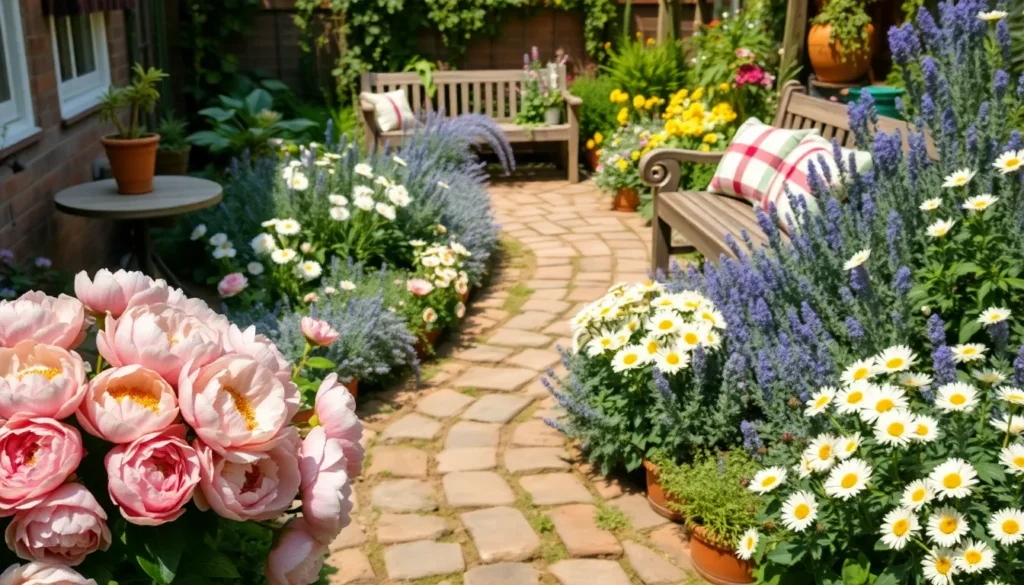Imagine stepping into your garden and being greeted by a symphony of colors, textures, and scents that lift your spirits and transform your space into a personal paradise. Whether you’re just beginning your gardening journey or you’re a seasoned green thumb, “Beautiful Flower Garden Layout Ideas” is your passport to creating an enchanting outdoor retreat that reflects your style and nurtures your soul.
With this guide, you’ll discover garden designs that not only enhance the beauty of your home but also make the most of your available space and resources. From maximizing blooms to creating a low-maintenance oasis, these practical ideas are crafted to boost your confidence and ensure your flower garden thrives, rewarding you with vibrant displays season after season.
Incorporate Layers for Depth
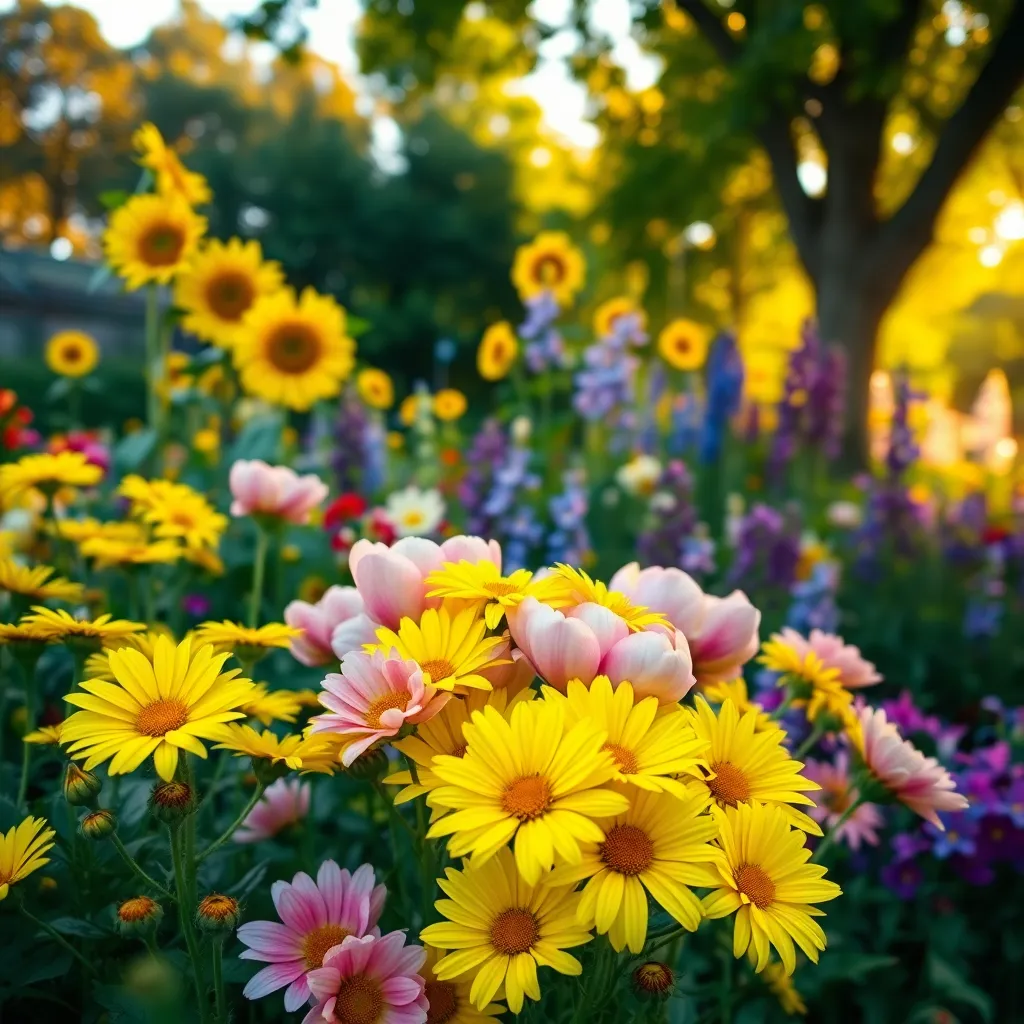
To create a flower garden with depth and visual interest, incorporate layers by varying plant heights and textures. Start by planting taller perennials like delphiniums or hollyhocks at the back of your garden beds, ensuring they have well-draining soil and receive full sun.
In front of these taller plants, introduce mid-height varieties such as coneflowers and daisies, which thrive in similar conditions and offer a burst of color. Include a mix of foliage plants like hostas or ferns to add texture and fill in gaps, ensuring they receive adequate shade and moisture.
For the front layer, consider low-growing ground covers like creeping thyme or sedum to create a lush carpet that reduces weeds and retains soil moisture. These plants are generally drought-tolerant, making them low-maintenance options that provide continuous coverage throughout the seasons.
Experiment by interspersing annuals such as marigolds or zinnias among your perennials to add seasonal color and adaptability. Regular deadheading and feeding with a balanced fertilizer will keep these annuals blooming vigorously throughout the growing season.
Group by Color Harmony
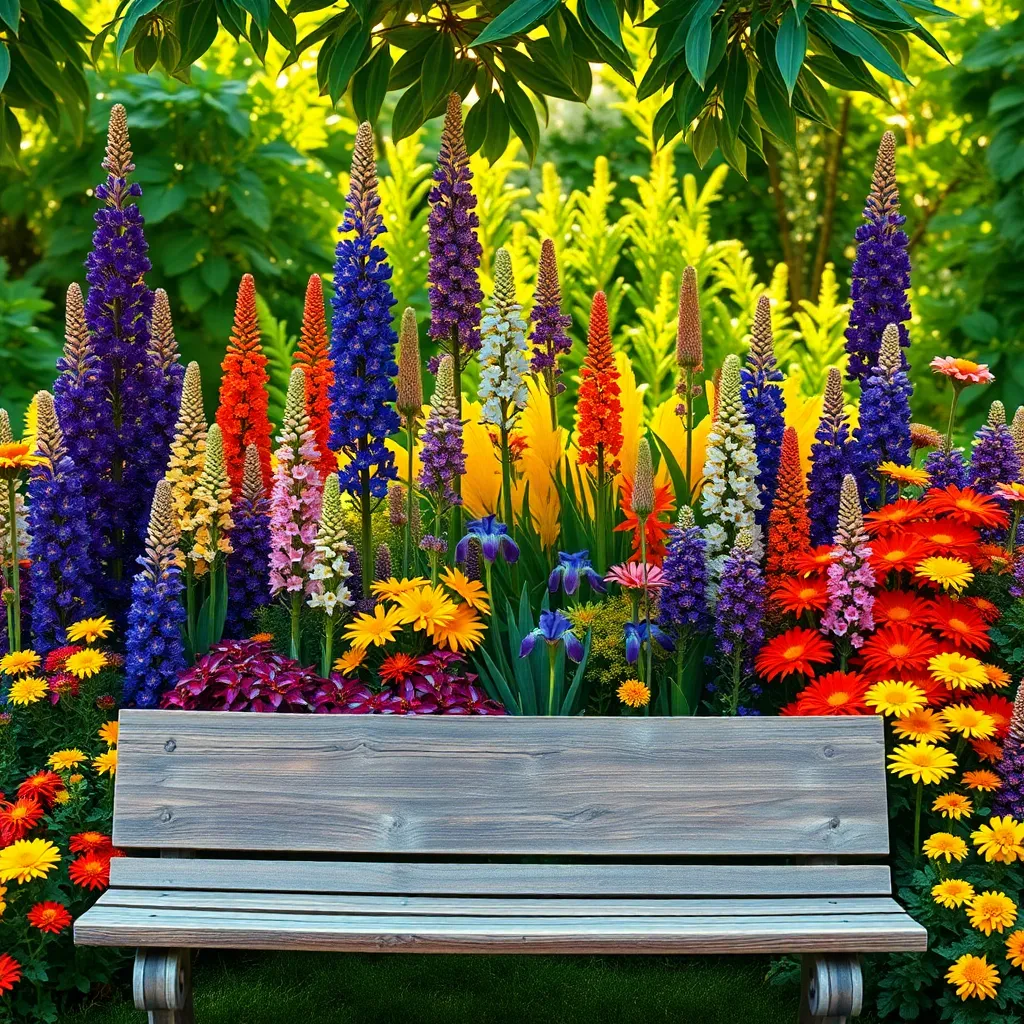
Creating a visually stunning garden can be achieved by grouping plants according to color harmony. Start by selecting flowers that share similar hues or complementary colors to create a cohesive look.
Consider using a color wheel to plan your garden design effectively. Adjacent colors like blues, purples, and pinks can create a serene and calming effect, perfect for a relaxation area.
For a vibrant and energetic look, choose contrasting colors such as yellow and purple. This combination can be used to draw attention to specific parts of your garden, such as an entryway or seating area.
When grouping by color, pay attention to the blooming seasons of your plants. Ensuring that your chosen colors are represented throughout the growing season will maintain the garden’s appeal all year round.
To enhance the color harmony, include plants with varying textures and forms. Foliage in shades of green can act as a neutral backdrop, allowing the flower colors to stand out even more prominently.
Choose Seasonal Blooms Wisely
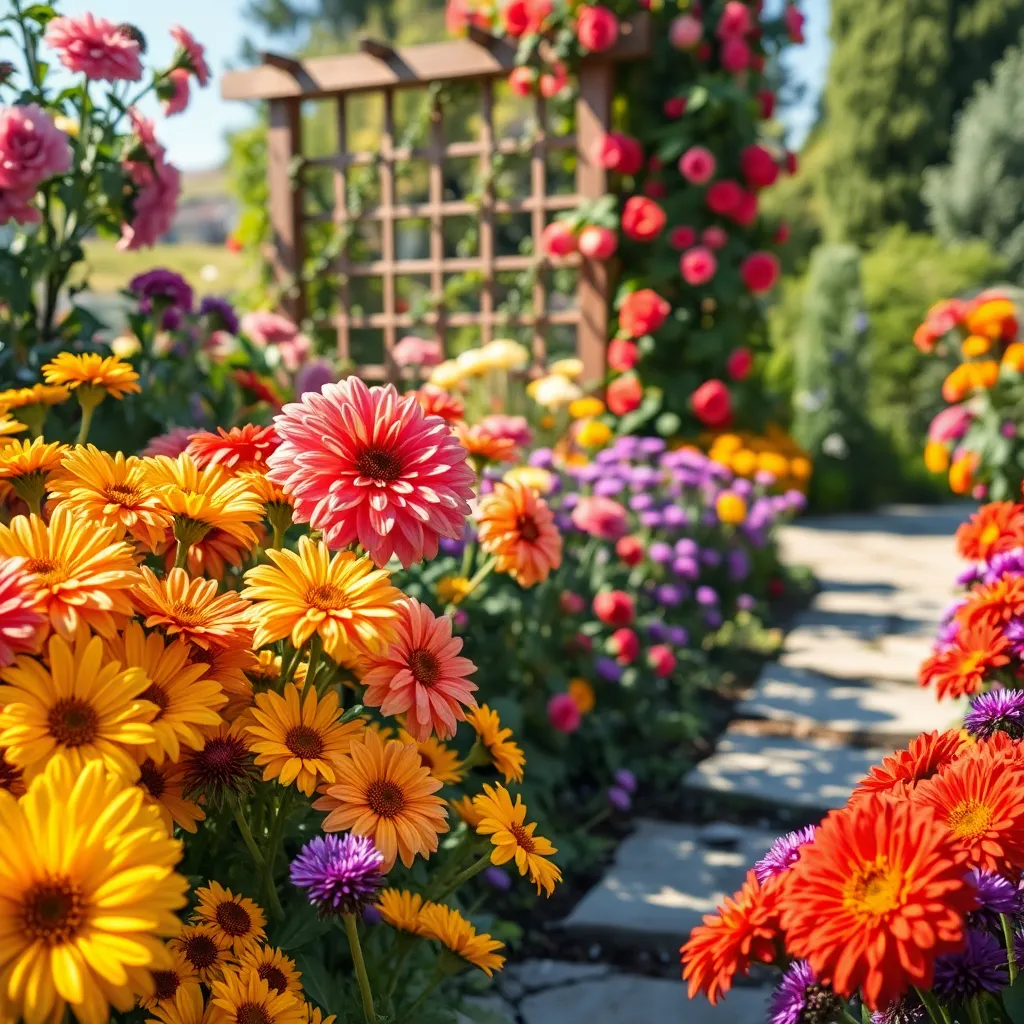
When choosing seasonal blooms, consider the specific climate of your region to ensure plants thrive year-round. Research which flowers are best suited for each season in your area, and plan your garden layout accordingly to maintain continuous blooms.
In spring, opt for flowers like tulips and daffodils, which prefer well-draining soil and full sun. These bulbs should be planted in the fall, allowing them to develop roots before the winter frost sets in.
As summer approaches, incorporate hardy annuals such as zinnias and marigolds, which can withstand hotter temperatures. Ensure they are planted in a location with at least six hours of sunlight daily and water them deeply once or twice a week, depending on rainfall.
For autumn, chrysanthemums and asters are excellent choices, bringing vibrant colors as other blooms fade. Ensure these plants have fertile, well-drained soil and protect them from early frosts by covering them at night if necessary.
Utilize Curved Pathways
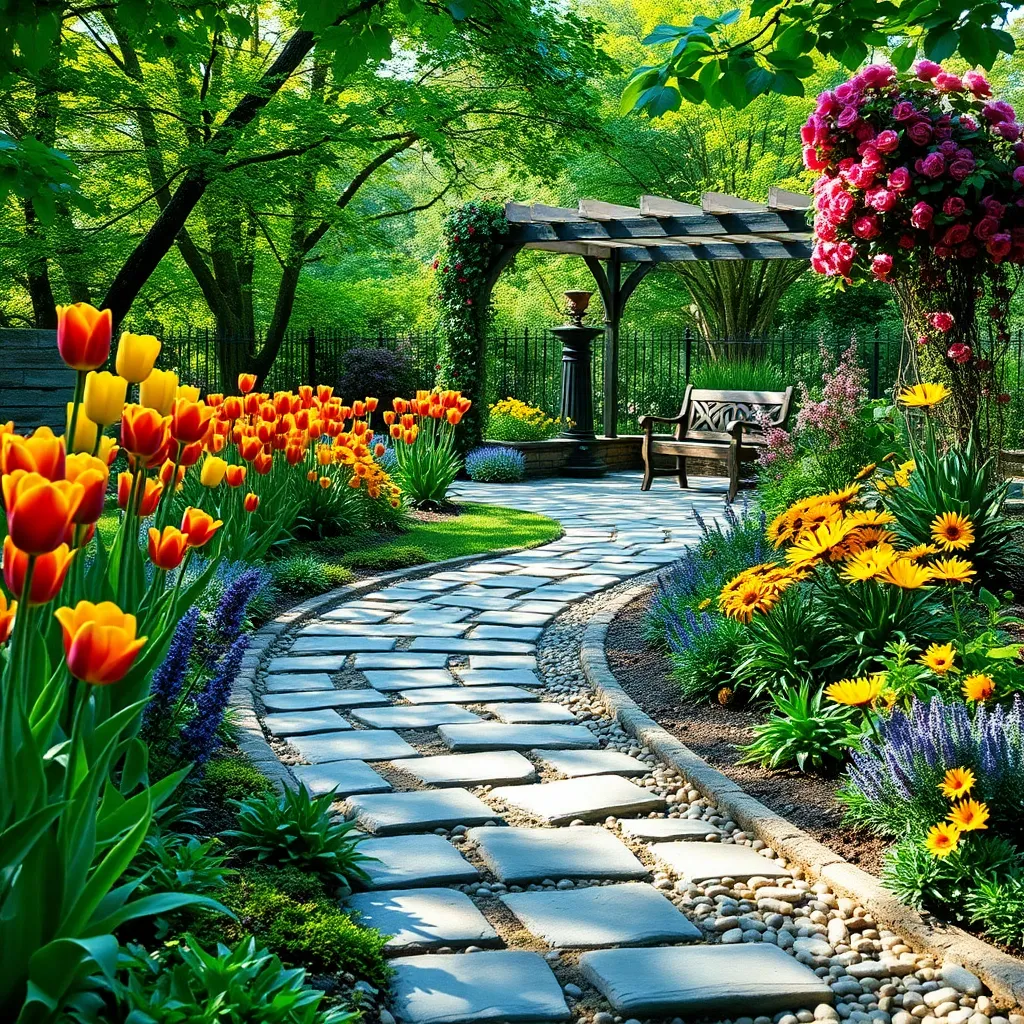
Incorporating curved pathways in your flower garden can transform it into a visually appealing and inviting space. These pathways not only guide the eye but also encourage a leisurely stroll through the garden, allowing visitors to appreciate the beauty of each plant.
When designing your pathways, use materials like gravel, stepping stones, or brick to create a natural feel that blends with the surrounding plants. Gravel paths are particularly effective for drainage, ensuring water doesn’t pool around your flowers, which can lead to root rot.
Consider the placement of your pathways to ensure they complement your plant arrangements. A pathway that curves around a cluster of perennials or ornamental grasses can highlight their textures and colors, creating a harmonious landscape.
For those looking to add a touch of sophistication, lighting along your pathways can enhance the ambiance and functionality of your garden. Solar-powered lights are an eco-friendly option that require minimal maintenance and can be repositioned easily to suit your garden’s evolving layout.
Integrate Vertical Elements Creatively
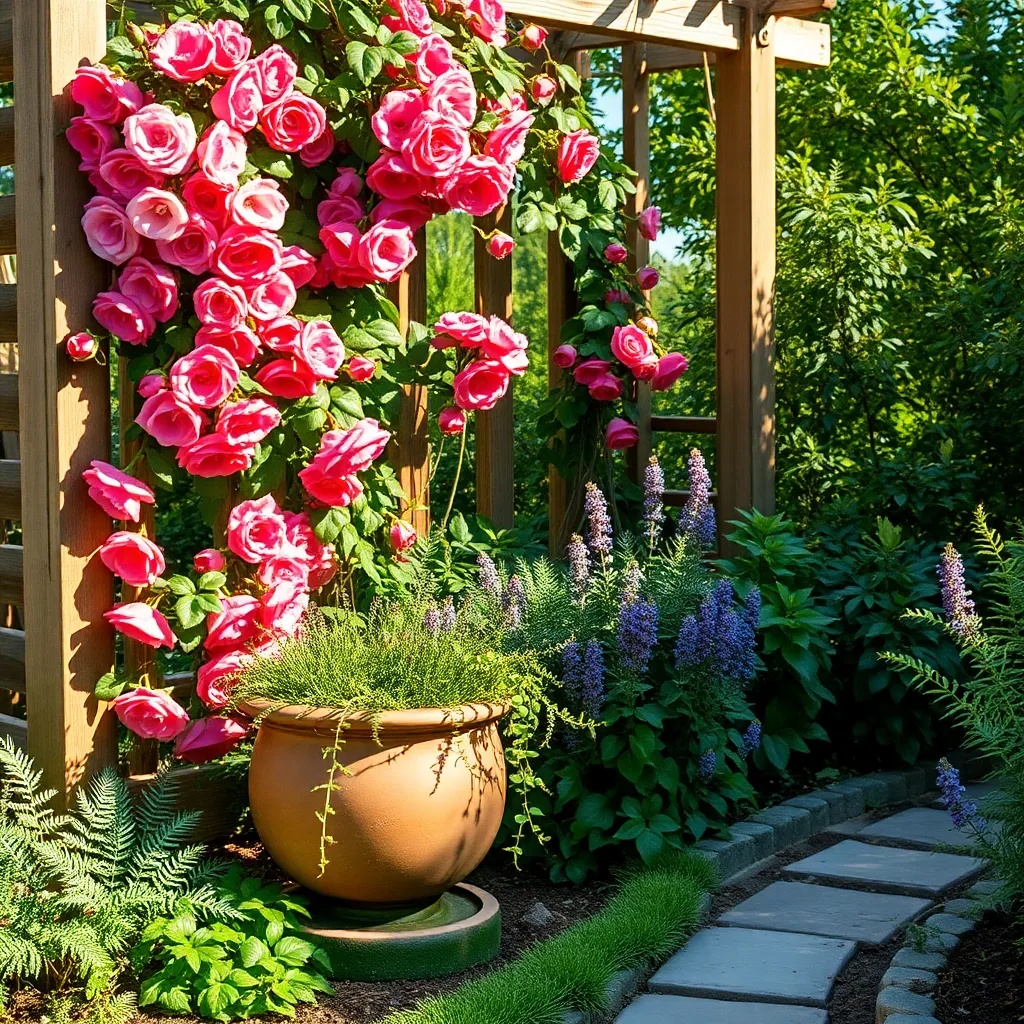
Vertical elements can dramatically enhance your garden’s aesthetic while maximizing space. Consider using trellises, arbors, or pergolas to support climbing plants like clematis or morning glories, which add height and color.
For those with limited ground space, vertical gardening offers a solution to grow more without expanding your footprint. Install wall planters or vertical garden panels that can host a variety of herbs and flowers, such as strawberries, mint, or nasturtiums, which thrive in well-drained soil.
Beginner gardeners can start with simple structures, such as a wooden pyramid or a metal obelisk, to support climbing roses. Ensure these plants receive at least six hours of sunlight daily and water them deeply once a week to encourage strong growth.
Advanced gardeners might experiment with espalier techniques, training fruit trees like apples or pears to grow flat against a wall. This method not only saves space but also improves fruit production by increasing sunlight exposure and air circulation.
Conclusion: Growing Success with These Plants
In exploring the ‘Beautiful Flower Garden Layout Ideas’ article, we’ve unraveled five key concepts that beautifully parallel nurturing relationships: the importance of diverse elements, the balance of space and intimacy, the role of seasonal change, the need for regular maintenance, and the power of patience and growth. Just as a garden flourishes with diverse plants, relationships thrive on diversity and balance. Seasonal changes in a garden remind us that relationships also have phases that require adaptation. Regular maintenance, much like tending to a garden, ensures continued health and growth. Above all, patience yields the most beautiful blossoms, whether in a garden or a relationship.
To immediately apply these insights, consider planning a ‘relationship gardening’ day with your partner or close friend. Use this time to discuss how you can incorporate these concepts into your relationship. As you take this proactive step, bookmark this article as a valuable guide to revisit and reinforce these principles.
Remember, the seeds of today’s actions are tomorrow’s flourishing relationships. By investing time and effort now, you’re setting the stage for a vibrant and resilient bond that stands the test of time. Save this article and let it be your companion on the journey to relationship success.

